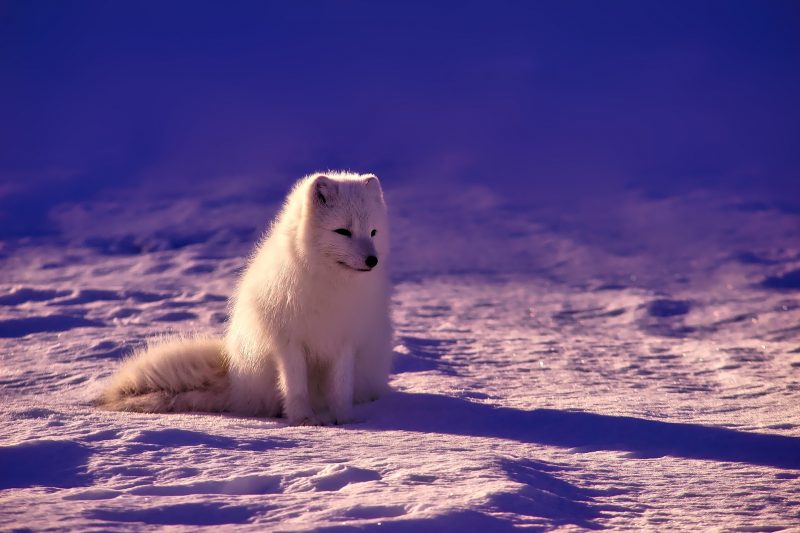
Photo by 12019 / CC0
Landscape photos by themselves can be incredibly striking. But what about when we include wildlife? Well as it turns out, our thought processes on composition and technique need to change if we’re going to do regular shoots combining wildlife and landscapes. So let’s take a look at several factors to help you get the most out of landscapes with wildlife.
How Can I Find Wild Animals for My Landscape Photos?
Wide open spaces are your best bet for securing great landscape photos that also include wildlife. But how to ensure a bison or lion crosses your path? First, it depends on what sort of wildlife you’re hunting for. Birds such as hawks and eagles can become a part of your landscape image even in the bounds of major cities, so long as sizable preserves exist for them to hunt and nest on. Deer are incredibly common even in urban parks. Contacting your local Department of Environmental Conservation for tips on where and when to shoot is a great place to start. Park Rangers catalog events like bird migrations, nesting habits of raptors, and other facts that will help you create landscapes that focus on the animal side of nature.
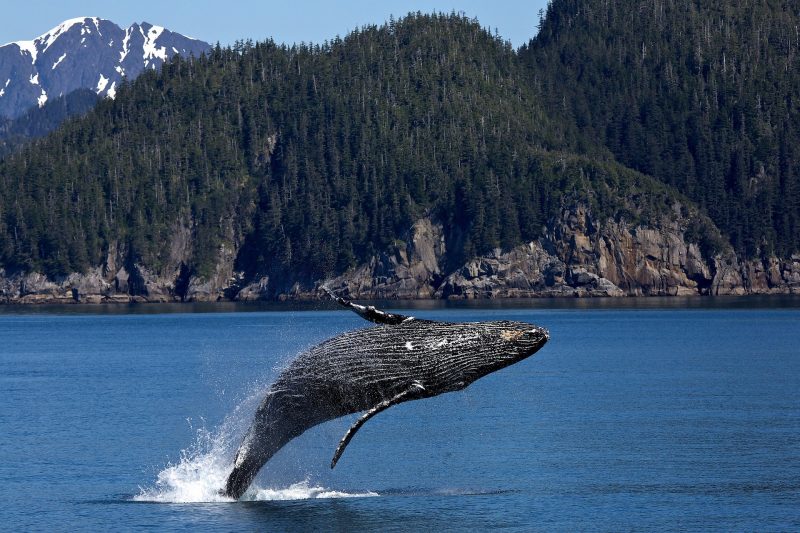
Photo by skeeze / CC0
But these guidelines change if you want shots of large mammals, like bison, lions, or whales. Most large mammals are not only incredibly shy but sparsely populated. National parks and refuges are your best bet if you want a decent shot of an elk bellowing into the chill morning air. As an added bonus the animals are somewhat habituated to the sight and scent of nearby humans which makes getting incredible photography that much easier. And of course, parks like Yellowstone and the Serengeti have stunning scenery to frame your targets.
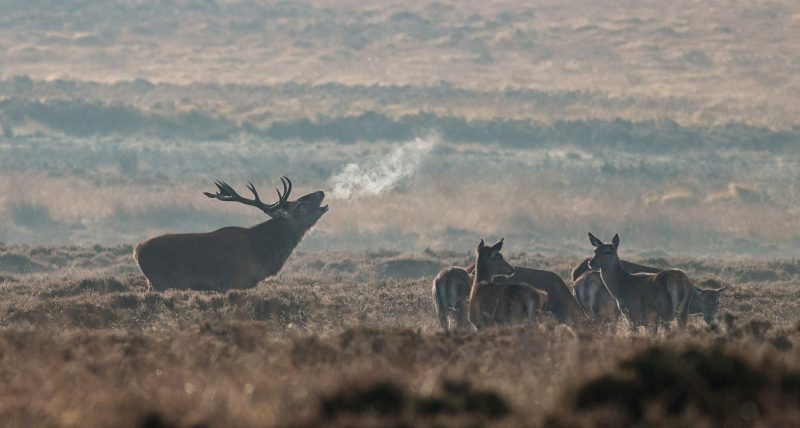
Photo by Up-Free / CC0
How Does Composition Change in a Landscape with Wildlife?
This depends entirely on the subject and scene in question. If I’m shooting a sunset I still want to use a 12-16mm wide angle field of view. If I decide to include a flock of migrating geese in that same photo I don’t really need to change a thing.
I may decide to shoot a landscape without animals using the same field of view. But if there is a mother bison and her calf 100 meters away I want to put more emphasis on them as they’re now a foreground point of interest.
For especially shy creatures I’ll need a telephoto lens with more reach if I want a good capture. Anything in the 150-200mm+ focal length works well but it can also mess up your composition if you’re trying to combine a landscape background with your animal subject. Thus, telephoto zoom lenses work better over prime lenses here because you have flexibility in composition.
With a prime 200mm lens you’d be forced to move or count on your subject moving to ensure you have the background AND foreground points of interest in exactly the right places. And if cost is a factor, even a relatively slow changeable aperture telephoto zoom like a 50-150mm f/3.5-5.6+ will allow you to save some money since depth of field is what we’re after in this type of photography. So long as you keep an eye on your overall exposure you’ll be fine. Of course, if you can afford an f/2.8 or less constant aperture telephoto zoom, then so much the better!
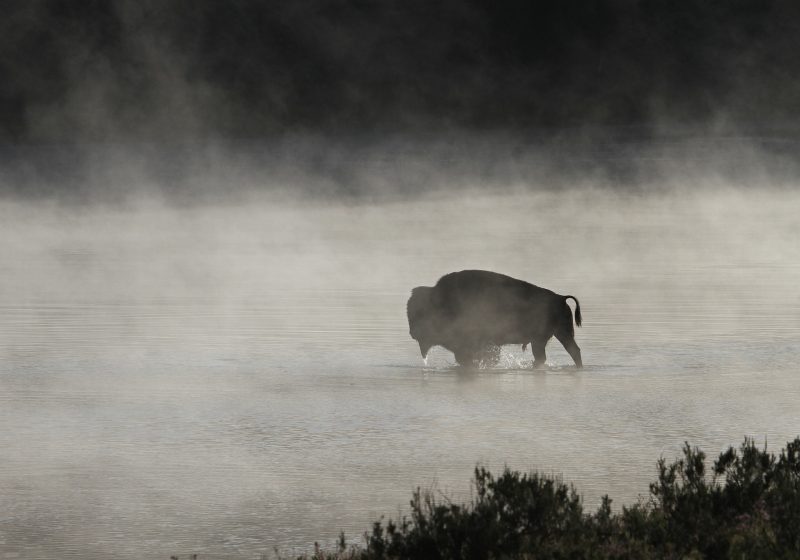
Photo by skeeze / CC0
I also want to consider the direction and target of the animal’s vision. If the bison is looking to my left then I want to include more space in that direction. If the animal happens to be looking at something in particular, like a stream or clump of grass, include that in the image. And centering a portrait of an animal looking directly at you often has an incredible impact.
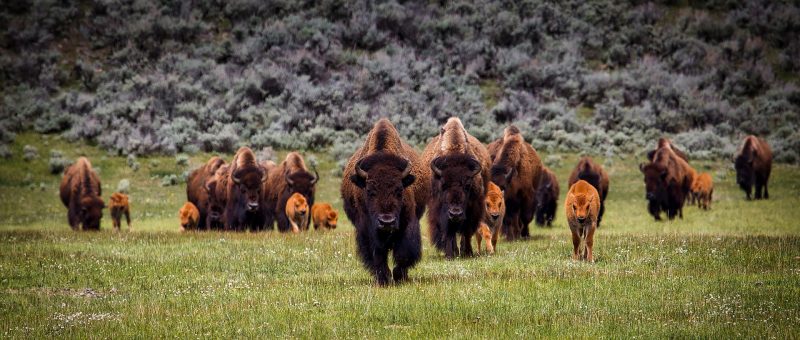
Photo by 12019 / CC0
How Do Camera Settings Change in a Landscape with Wildlife?
One major consideration is shutter speed. Landscapes don’t move much but animals usually do. Let’s say I’m using f/11 to create a large depth of field for my landscape and a relatively slow shutter speed, like 1/60ths of a second, to ensure my image is well exposed on a cloudy day. If I try shooting a fast-moving hawk as it unexpectedly swoops in to take a rabbit the movement of the bird will cause blur to form. I’d need to use a shutter speed closer to 1/500ths of a second — which would make my overall exposure unacceptably dark. I’d need to then adjust either my ISO, my aperture, to compensate.
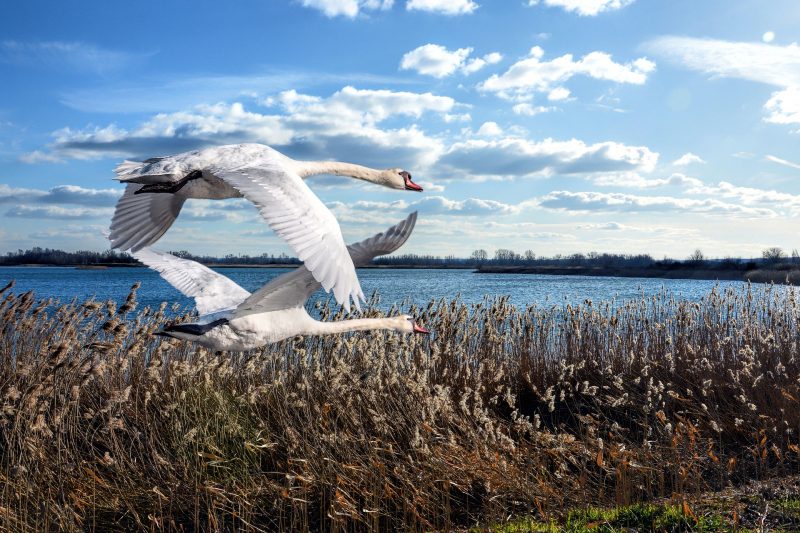
Photo by handbenn / CC0
Or possibly not if everything’s well lit already. These settings shift on a scene by scene basis, but its certainly something to be aware of. Don’t get too used to your Manual camera settings having been calibrated for a scene without any motion in them if you intend to hunt for moving targets.
Conclusion
Wildlife and landscape photos both have an incredible impact with the right subjects. And combining the two types can tell very powerful stories. There’s a slight luck factor involved here as well since wildlife by definition doesn’t always do what we want and where. The full trinity is the place, subjects, and timing, which is a matter of both luck and skill. Will the elk turn its head towards you as you finally get the perfect Manual focus or turn away? It’s high stakes photography and it shows with every stunning gallery image. Good luck out there in the woods!
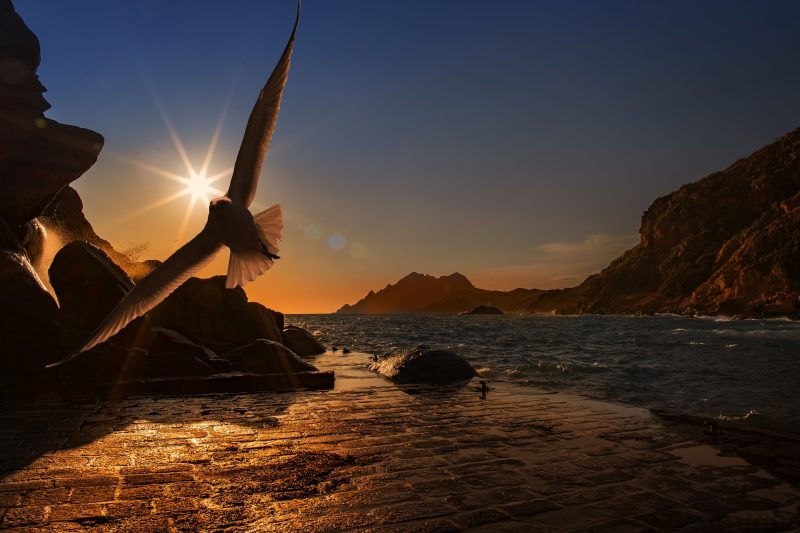
Photo by Bilder_meines_Lebens / CC0
Photo license link: CC0